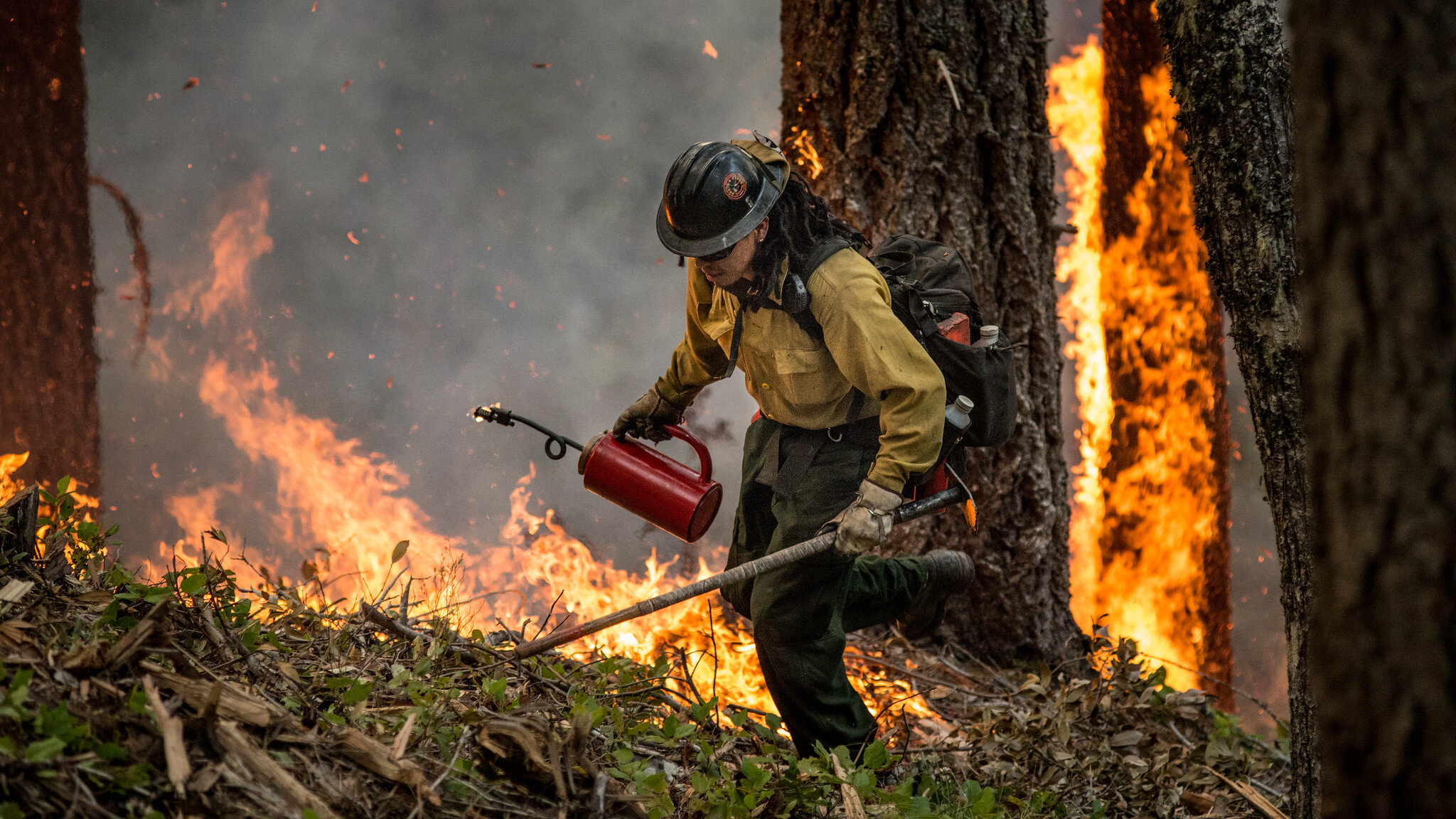
Indigenous Cultural Burning
Native forests need Native fires.
Native species co-evolved with Native fires, but this mutually-beneficial relationship was broken by settler-colonialism, and fire exclusion is a form of environmental racism.
FUSEE works in solidarity with Indigenous peoples defending their sacred sites from firefighting damage, and promoting their sovereign right to use fire to steward their cultural resources and conduct religious ceremonies.
FUSEE’s Indigenous Cultural Burning Webinar Series
Stories in Cultural Burning with Joe Scott, Nov. 2022, Zoom Passcode: WAGG@T6y
Fire is Medicine with Ryan Reed, Dec. 2022, Zoom Passcode: #t^aD9T$
Restoring a Meadow—Cultural Burning in Yosemite (NPS, 2005)
To renew Yosemite, California should embrace a once-outlawed Indigenous practice (Aeon, 2022)
Cultural Burn at Smithfield Oaks: Re-kindling a Relationship with Fire (2023)
Recommendations on how to include Tribal sovereignty language in public policy commenting.
Promoting Cultural Burning by the Karuk Tribe
Karuk People have survived an era of genocide, suppression of cultural management practices, and extraction-based management throughout their territorial landscapes against all odds. This has created many social, economic, and ecological disparities. The traditional ecological knowledge, practice, and belief systems of the Karuk are at risk of loss. They have fought hard to maintain these systems but it gets harder with each generation.
There is a critical need for maintaining Karuk cultural identity, but to do this they need to revitalize the indigenous stewardship practices of the Karuk people.
Not only are Karuk people among the most economically depressed in California, but many local aquatic, aviary, plant, and wildlife species are in decline, with some facing extinction. People have been taught that humans are separate from nature, not a part of it. The very term “indigenous” however means “natural to place.” Karuk monetary systems do not translate to the contemporary societal systems, which means that in order to be indigenous to place, you have to remain economically depressed while watching the fish, water, wildlife, and plants diminish in quality and abundance. Future generations—of all species—deserve better than this!
Karuk youth are just starting to overcome the inter-generational trauma imposed upon the tribal community. Creating opportunity for them is, after all, what the work of cultural and ecological restoration is really for. Climate change is creating problems that cannot be solved without indigenous management principles and practices. The Karuk have sent an important call to action. Click on the link to watch a short inspirational film regarding their climate change and capacity building efforts and involvement of youth.
The Karuk Tribe's Department of Natural Resources have the mission to protect, enhance and restore the cultural/natural resources and ecological processes upon which Karuk people depend. Department staff ensure that the integrity of natural ecosystem processes and traditional values are incorporated into resource management strategies.
The Karuk Climate Adaptation Plan brings their values and traditional ecological knowledge together with Western scientific knowledge to chart out a visionary plan for cultural and ecological restoration of the land and the people of the land. Restoring fire processes through active fire management is a vital element of their plan. This model restoration plan from the “Fix the World” people is worthy of other communities to emulate. Read the Karuk plan by clicking the link below:
Additionally, see the 2022 Karuk Tribe Department of Natural Resources Impact Report and the 2010 Karuk Tribe Department of Natural Resources Eco-Cultural Resources Management Plan by clicking below:
Advocating for Cultural Burning
Protecting Native American Cultural Resources and Sacred Sites from Fire Suppression Damage
Cultural Burning in the News
FUSEE Resources
Indigenous Cultural Burning Crew Returns Good Fire to Oregons Willamette Valley, blog post by Mike Beasley
May 1, 2023
Additional Resources
Books:
Anarcho-Indigenism: Conversations on Land and Freedom edited by Francis Dupuis-Déri and Benjamin Pillet
Before the Wilderness: Environmental Management by Native Californians compiled and edited by Thomas C. Blackburn and Kat Anderson
Braiding Sweetgrass by Robin Wall Kimmerer
California Indians and their Environment: An Introduction by Kent G. Lightfoot and Otis Parrish
Fire, Native Peoples, and The Natural Landscape edited by Thomas R. Vale
Forgotten Fires: Native Americans and the Transient Wilderness by Omer C. Stewart
Indians, Fire, and the Land in the Pacific Northwest by Robert T. Boyd
References on the American Indian Use of Fire in Ecosystems compiled by Gerald W. Williams
Salmon & Acorns Feed our People by Kari Marie Norgaard












Humans once experienced an intimate relationship with fire. In some parts of the world—such as within Karuk Tribal Lands—this connection remains unbroken. In North America, widespread Indigenous fire use shaped forests and grasslands, leading to greater biological diversity and healthy watersheds while also mitigating impacts from wildfire and climate variability.